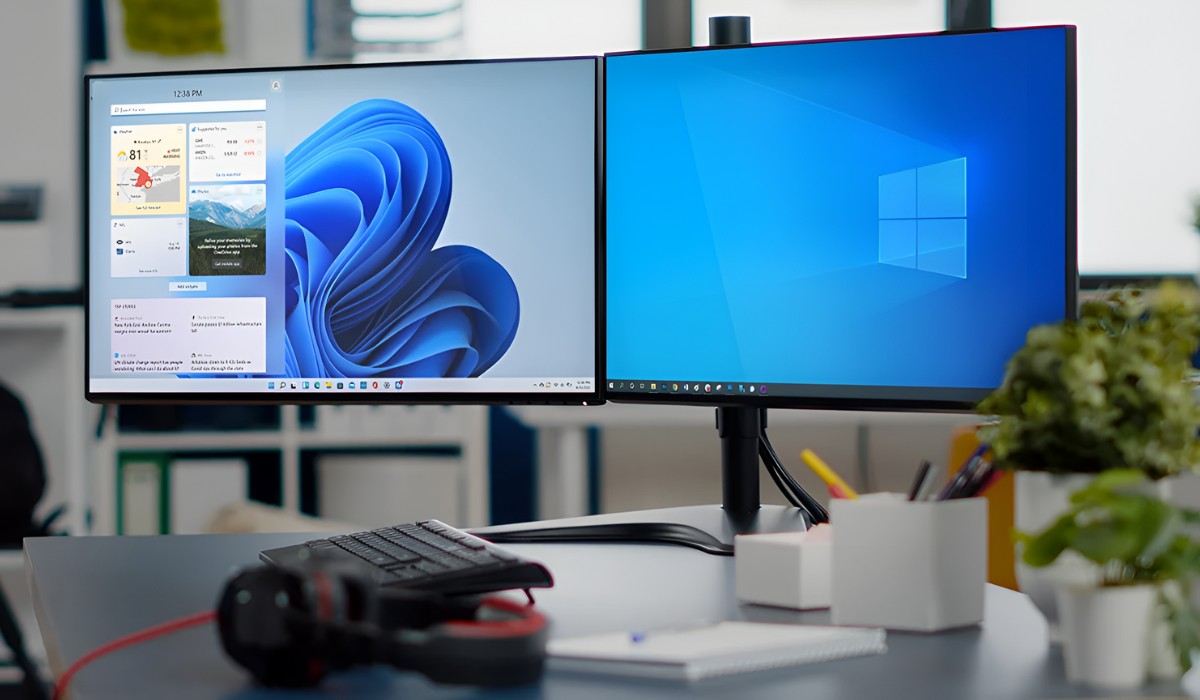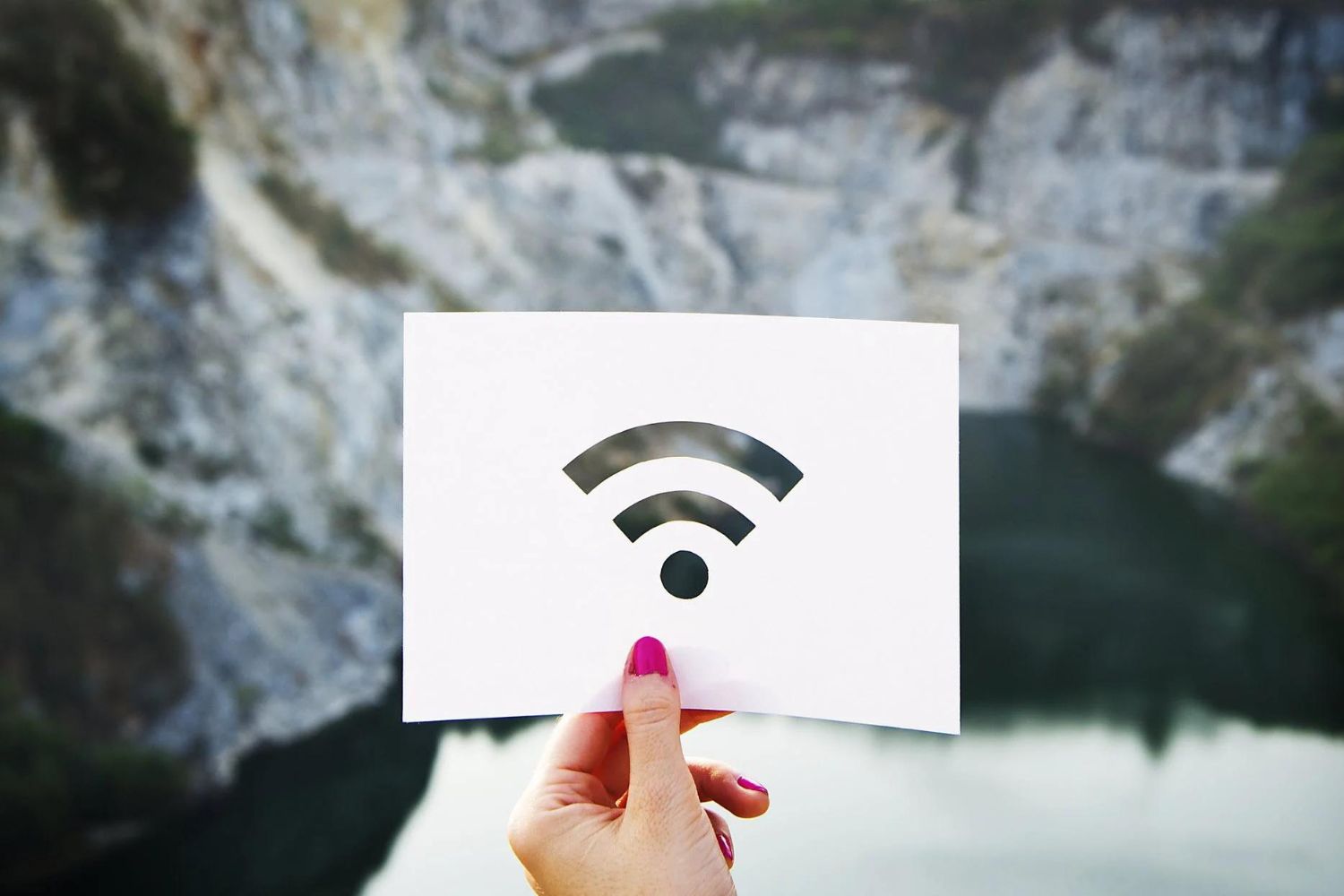Introduction
Connecting your computer to a mobile hotspot can provide a lifeline of connectivity in situations where traditional Wi-Fi networks are unavailable. Whether you're traveling, working remotely, or experiencing an unexpected internet outage, leveraging your mobile device's hotspot functionality can keep you connected to the digital world. This user guide will walk you through the process of setting up and troubleshooting a hotspot connection, ensuring that you can stay productive and connected wherever you go.
In the following steps, we will cover the essential aspects of using a mobile hotspot to connect your computer to the internet. First, you will learn how to activate the hotspot feature on your mobile device. Then, we will explore the process of establishing a connection between your computer and the hotspot. Finally, we will address common issues that may arise during this process and provide troubleshooting tips to help you overcome them.
By the end of this user guide, you will have the knowledge and confidence to seamlessly connect your computer to a mobile hotspot, empowering you to stay connected and productive in a variety of situations. Let's dive into the step-by-step process of harnessing the power of your mobile device to create a reliable internet connection for your computer.
Step 1: Turn on the Hotspot on your Mobile Device
Turning on the hotspot feature on your mobile device transforms it into a portable Wi-Fi network, allowing other devices, such as your computer, to connect to the internet through it. The process of activating the hotspot may vary slightly depending on your device's operating system, but the fundamental steps remain consistent across most platforms.
-
Accessing Hotspot Settings: Begin by unlocking your mobile device and navigating to the settings menu. On most devices, you can find the hotspot or tethering option under the "Network & Internet" or "Connections" section. Once located, tap on the "Hotspot" or "Mobile Hotspot" option to proceed.
-
Enabling the Hotspot: Within the hotspot settings, you will typically find a toggle switch or button to activate the hotspot feature. By flipping this switch to the "On" position, you initiate the process of broadcasting a Wi-Fi signal from your mobile device.
-
Customizing Hotspot Settings: Depending on your preferences and security considerations, you may have the option to configure the hotspot settings. This can include setting a custom network name (SSID) and password for the hotspot, ensuring that your connection remains secure and identifiable to authorized users.
-
Verifying Activation: Once the hotspot is enabled, your mobile device will begin broadcasting the Wi-Fi signal, allowing nearby devices to detect and connect to it. You may also see a notification or indicator on your device's screen, confirming that the hotspot is active and ready for connections.
-
Understanding Data Usage: It's important to note that using your mobile device as a hotspot consumes data from your cellular plan. Be mindful of your data allowance and consider adjusting your usage habits or opting for a suitable data plan to accommodate hotspot usage.
By following these steps, you can effectively activate the hotspot feature on your mobile device, paving the way for your computer to establish a connection and access the internet. With the hotspot activated, you are now ready to proceed to the next step of connecting your computer to the hotspot and leveraging the mobile network for seamless internet access.
Step 2: Connect the Computer to the Hotspot
Once the hotspot feature is activated on your mobile device, the next step is to connect your computer to the newly created Wi-Fi network. This process allows your computer to utilize the mobile device's internet connection, enabling you to access online resources, communicate, and engage in various activities that require internet connectivity. The following steps outline the process of establishing a connection between your computer and the mobile hotspot:
-
Accessing Wi-Fi Settings: Begin by accessing the Wi-Fi settings on your computer. This can typically be done by clicking on the Wi-Fi icon located in the system tray or menu bar, depending on your computer's operating system.
-
Detecting the Hotspot: Within the Wi-Fi settings, your computer will scan for available networks, including the Wi-Fi signal being broadcast by your mobile device. The name of the hotspot, also known as the SSID (Service Set Identifier), should be visible in the list of available networks.
-
Connecting to the Hotspot: Locate the SSID of your mobile hotspot in the list of available networks and select it. You may be prompted to enter the password for the hotspot, especially if you have configured a custom password during the hotspot activation process. Enter the password and proceed to connect to the hotspot.
-
Establishing the Connection: After entering the correct password, your computer will initiate the connection process with the mobile hotspot. Once successfully connected, you will see a confirmation message or indicator on your computer, indicating that you are now connected to the hotspot and have access to the internet.
-
Verifying Connectivity: To ensure that the connection is functioning as expected, open a web browser or any internet-dependent application on your computer. Attempt to access a website or perform a basic internet activity to verify that the connection to the hotspot is providing internet access.
By following these steps, you can seamlessly connect your computer to the mobile hotspot created by your mobile device. This connection empowers your computer with the ability to access the internet using the mobile network, providing a valuable lifeline of connectivity in various scenarios where traditional Wi-Fi networks may be unavailable or unreliable.
Now that your computer is successfully connected to the hotspot, you can harness the power of your mobile device's internet connection to stay productive, connected, and informed, regardless of your location or the availability of conventional Wi-Fi networks.
Step 3: Troubleshooting Common Issues
While connecting your computer to a mobile hotspot can be a straightforward process, certain issues may arise that could disrupt the connection or hinder your ability to access the internet. By understanding and addressing these common issues, you can ensure a seamless and reliable hotspot experience. Here are some troubleshooting steps to overcome potential challenges:
-
Weak Signal Strength: If you encounter a weak signal or poor connectivity when attempting to connect to the hotspot, consider repositioning your mobile device. Moving it to a different location, preferably closer to your computer, can improve signal strength and enhance the stability of the connection.
-
Authentication Errors: In cases where you are unable to connect to the hotspot due to authentication errors, double-check the password entered on your computer. Ensure that the password matches the one set for the hotspot on your mobile device. If necessary, re-enter the password and attempt to connect again.
-
Mobile Data Limitations: If your mobile hotspot connection is unexpectedly slow or intermittent, it could be attributed to reaching the data limit set by your cellular plan. Verify the remaining data allowance on your mobile device and consider adjusting your usage or acquiring additional data to restore optimal hotspot performance.
-
Software Updates and Compatibility: Ensure that both your mobile device and computer are running the latest software updates. Compatibility issues and performance optimizations are often addressed through software updates, potentially resolving connectivity issues between the devices.
-
Battery and Power Saving Settings: If your mobile device is experiencing power-saving measures or low battery levels, it may impact the performance of the hotspot. Ensure that your device is adequately charged and that power-saving settings are not excessively limiting the hotspot's functionality.
-
Network Congestion: In densely populated areas or locations with numerous Wi-Fi networks, network congestion may affect the performance of your mobile hotspot. Consider adjusting the Wi-Fi channel on your mobile device to minimize interference and improve connectivity.
-
Hardware Malfunctions: If persistent connectivity issues persist, consider restarting both your mobile device and computer. Additionally, inspect the hardware components, such as the Wi-Fi antenna on your mobile device, for any signs of damage or interference that may impact the hotspot's performance.
By addressing these common issues and implementing the suggested troubleshooting steps, you can enhance the stability and reliability of your mobile hotspot connection. Troubleshooting potential challenges ensures that you can consistently leverage your mobile device's hotspot functionality to stay connected and productive, regardless of the circumstances.
Now that you have a comprehensive understanding of troubleshooting common hotspot issues, you are well-equipped to navigate and resolve any connectivity challenges that may arise, empowering you to maintain a seamless and dependable connection between your computer and the mobile hotspot.
Conclusion
In conclusion, the process of connecting your computer to a mobile hotspot offers a versatile solution for accessing the internet in diverse scenarios. By following the user guide's step-by-step instructions, you can effectively activate the hotspot feature on your mobile device and establish a seamless connection to empower your computer with reliable internet access.
The activation of the hotspot feature on your mobile device serves as the gateway to portable connectivity, enabling you to create a Wi-Fi network that your computer can leverage to stay connected. By customizing hotspot settings and understanding data usage considerations, you can optimize the hotspot experience to align with your connectivity needs and preferences.
Furthermore, the process of connecting your computer to the hotspot fosters a bridge between your mobile device and computer, allowing you to harness the power of your mobile network for online activities, remote work, communication, and entertainment. This connectivity flexibility proves invaluable in situations where conventional Wi-Fi networks are inaccessible or unreliable, highlighting the significance of leveraging mobile hotspots as a reliable connectivity solution.
Moreover, the troubleshooting tips provided in this user guide equip you with the knowledge and strategies to address common hotspot issues, ensuring that you can overcome connectivity challenges and maintain a dependable connection between your computer and the mobile hotspot. By understanding and implementing these troubleshooting steps, you can enhance the stability and performance of your hotspot connection, further solidifying its role as a dependable source of internet access.
In essence, the ability to connect your computer to a mobile hotspot empowers you to adapt to various connectivity scenarios, whether you are traveling, working remotely, or encountering unexpected internet outages. This user guide equips you with the essential knowledge and practical insights to seamlessly navigate the process of setting up and troubleshooting a mobile hotspot connection, ultimately enabling you to stay connected and productive in diverse environments.
By embracing the capabilities of mobile hotspots and understanding the user-friendly process of connecting your computer to this portable Wi-Fi network, you can confidently navigate the digital landscape, ensuring that reliable internet access is always within reach, regardless of the circumstances.
In summary, the user guide's comprehensive approach to utilizing mobile hotspots underscores the significance of adaptable and resilient connectivity solutions, positioning you to thrive in an increasingly interconnected world where seamless access to the internet is paramount.

























